He earned his first real success by tapping into America’s unquenchable thirst for broad slapstick comedy, but Jim Carrey always had bigger ambitions than anyone could have guessed by watching Ace Ventura: Pet Detective, and he’s proven it repeatedly by choosing projects beyond the scope of Farrelly-friendly laffers. His reach has occasionally exceeded his grasp, but few careers can boast a range extending from Dumb and Dumber to Eternal Sunshine of the Spotless Mind. And with his appearance as the Colonel in Kick-Ass 2 bowing this weekend, we decided there was no time like the present to take a look at the best-reviewed films of Jim Carrey’s career!
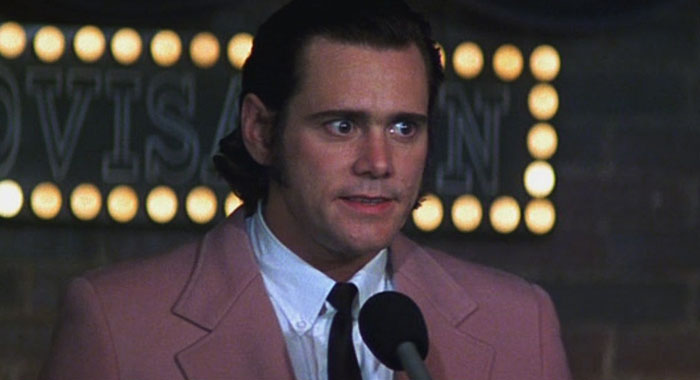
For most of the 1980s and 1990s, Andy Kaufman was a little-remembered comic, mostly known for his portrayal of dimwitted immigrant mechanic Latka Gravas on the ABC sitcom Taxi — but the late 1990s witnessed a resurgence in interest surrounding Kaufman’s often pioneering work, thanks to a pair of biographies, a handful of DVD reissues, and the R.E.M.-referencing Man on the Moon. Carrey continued his 1990s run of prestige pictures with Moon, subsuming himself so completely into the role of the inscrutable Kaufman that most critics were willing to forgive the movie’s fuzzy, weightless middle, its fudging of certain facts, and a few fumble-fingered attempts at going meta. Although many scribes were quick to point out the movie’s flaws — and Kaufman’s all-too-apparent flaws as a protagonist — praise for Moon‘s star was all but universal, typified by Jeffrey M. Anderson of Combustible Celluloid, who applauded, “Carrey gets inside Kaufman’s skin.”

Sea Bass! Part of Carrey’s 1994 trilogy of broad-as-a-barn, occasionally revolting comedies, Dumb and Dumber paired the rising star with Jeff Daniels as a couple of well-meaning dimwits who stumble into a cross-country adventure involving Lauren Holly and a briefcase full of cash. While not quite the across-the-board smash that There’s Something About Mary turned out to be a few years later, Dumb and Dumber still managed to include enough charm between the goofy jokes to reach 64 percent on the Tomatometer. It didn’t win any points for smarts, obviously, but that was beside the point — as recognized by writers such as Entertainment Weekly’s Owen Gleiberman, who noted that “Carrey…does literal-minded doofdom with peerless enthusiasm.”
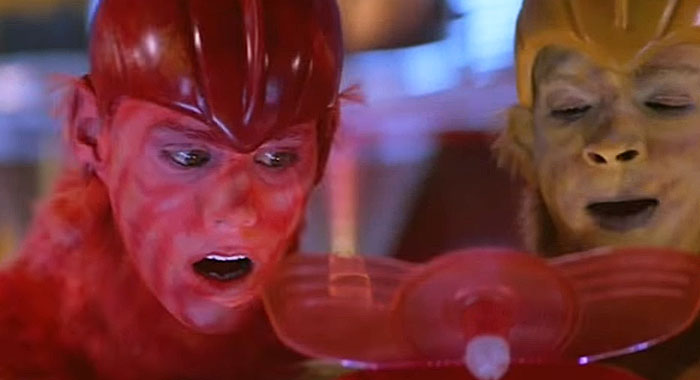
You might be surprised to find this late-night cable mainstay on a list that includes cult favorites like The Cable Guy and box-office champs like Bruce Almighty, but the Tomatometer does not lie, and critics cheered loudly enough to send this 1989 cult classic all the way up to 65 percent. Although quite a few scribes sniffed at at Earth Girls are Easy‘s low ambitions and thick layer of cheese, a greater number were able to grin and bear Julien Temple’s brightly colored send-up of hokey sci-fi and 1980s life in the San Fernando Valley. As a furry red alien named Wiploc, Carrey received one of his first major chunks of screen time here, and although his efforts were rewarded with minimal box-office success, he did get to trade lines with Geena Davis and Julie Brown — and help earn some delightfully backhanded praise from the likes of Luke Y. Thompson of the New Times, who declared the film to be “stupid but wonderful.”
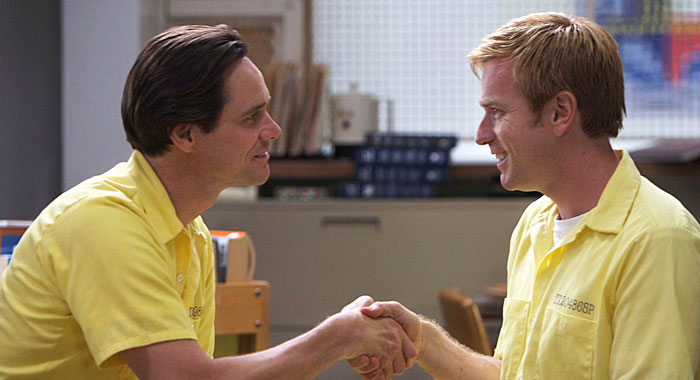
Between Eternal Sunshine of the Spotless Mind in 2004 and the end of the decade, Jim Carrey had a pretty rough go of it, vacillating between rehashed broad comedies like Yes Man and ill-advised dramatic fare like The Number 23 — and the best live-action project he booked during that span, Glenn Ficarra and John Requa’s I Love You Phillip Morris, ended up gathering dust in the studio vaults for years. Given that it dramatizes the real-life, stranger-than-fiction love affair between a cop-turned-con man (Carrey) and his charismatic prison cellmate (Ewan McGregor), it’s unsurprising (but still disappointing) that Morris would have a hard time finding a spot on the release schedule — and the minimal box office returns generated by its limited theatrical run seemed to reinforce Hollywood’s belief that audiences weren’t ready for a darkly comic dramedy about a homosexual love affair. Morris resonated with most critics, however — particularly Carrey’s work, lauded by Stephen Holden of the New York Times when he wrote, “With his manic glare, ferociously eager smile, hyperkinetic body language and talent for instant self-transformation, Mr. Carrey has rarely been more charismatic on the screen.”
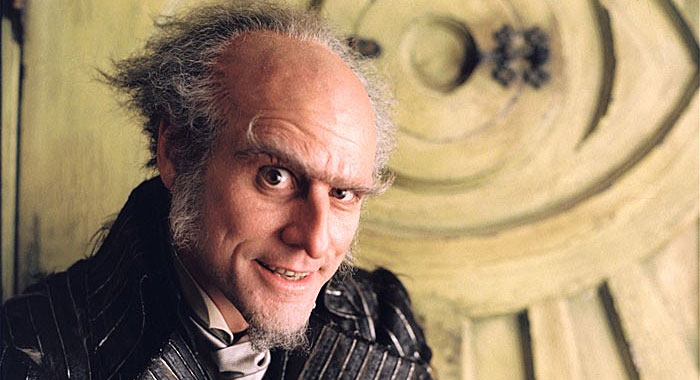
It was a bit of a non-starter at the box office, failing to recoup its $140 million budget with its domestic receipts, but few roles in the history of children’s fiction have ever been better-suited to an actor than the villainous master of disguise known as Count Olaf and his on-screen counterpart, Jim Carrey. Although A Series of Unfortunate Events drew the ire of some fans of the books for softening their frequently nasty edges, it remains a visual feast, as well as a tour de force for Carrey, who was able to take advantage of his manic energy in a way not seen since his mid 1990s heyday. A sequel remains in development limbo, but don’t let Hollywood’s cold feet keep you from giving Unfortunate a rental — as the Reno Gazette-Journal’s Forrest Hartman put it, “not many children’s movies center on recently orphaned children delivered to the home of a homicidal thespian. Then again, not many children’s movies are as good as this one.”

One of the only films to ever net its star nominations from both the Golden Globes and the Golden Raspberries, 1994’s The Mask presented filmgoers with something of an early 1990s trifecta: State of the art special effects, some marvelously over-the-top mugging from Jim Carrey, and a heaping helping of va-va-va-voom from instant star Cameron Diaz, who turned Carrey’s nebbishy bank clerk Stanley Ipkiss into a leering Tex Avery wolf (and had roughly the same effect on male viewers). It’s loud and far from subtle, but The Mask is also a lot of fun, not least because Carrey’s impossibly limber performance ultimately proves to be as much of a special effect as anything else on the screen. Variety’s Leonard Klady spoke for many of his peers when he summed it up as “adroitly directed, viscerally and visually dynamic and just plain fun.”
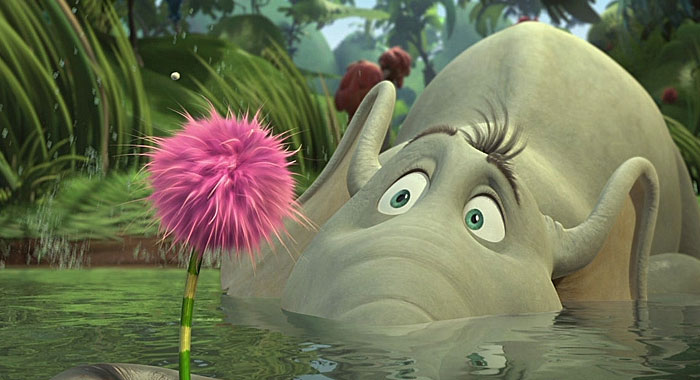
Carrey’s first brush with a Seuss-inspired adaptation didn’t go so well, which may have scared a few viewers away from the CG-animated Dr. Seuss’ Horton Hears a Who! — but it was their loss, as attested by the mostly quite positive reviews that greeted the second film adaptation of this timeless tale of a good-hearted elephant who teaches his detractors that “a person’s a person, no matter how small.” As Horton’s voice, Carrey did a better job of adding marquee value than bringing hidden layers of meaning to his character, and critics were quick to point out that Horton suffers most of the same difficulties that are bound to trouble a 90-minute film based on an illustrated short story, but for most, the movie’s charms proved impossible to resist — such as Brian Webster of the Apollo Guide, who happily reported that “taking on Seuss has proven a challenge for Hollywood, but a nice balance has been struck here between authenticity and new ideas. This one’s a winner.”
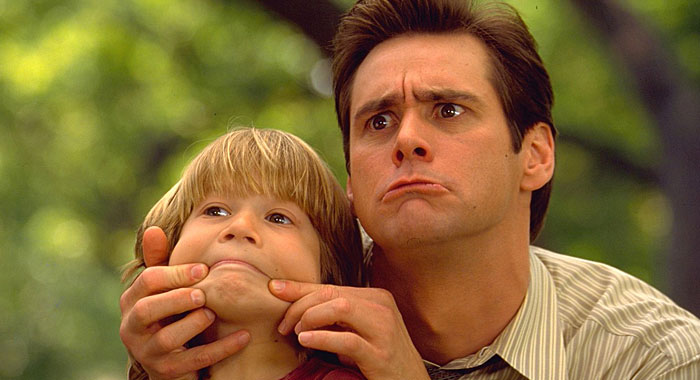
Given that Carrey and Liar Liar director Tom Shadyac had previously collaborated on Ace Ventura, a person could have been forgiven for assuming that their reunion would rely on the same scatalogical humor and over-the-top physical comedy that the world’s most famous pet detective rode to box-office riches…and they would have been right, to an extent, although Liar Liar features a much softer-edged version of Carrey’s manic persona. It isn’t his sharpest comedy, but at this point, even critics who had grown accustomed to hating Carrey’s work found themselves surprisingly susceptible to his charms — most notably Roger Ebert, who wrote “I am gradually developing a suspicion, or perhaps it is a fear, that Jim Carrey is growing on me.” Filmgoers had no such fear, driving this family-friendly tale of a pathological fibber rendered unable to lie for a day to global grosses in excess of $300 million.
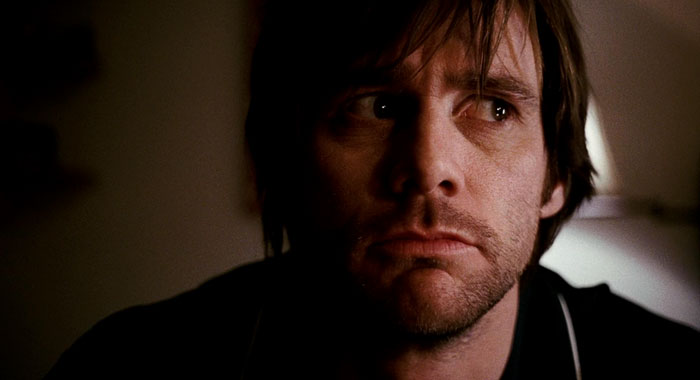
While he spent the early 1990s mugging it up for fans of perfectly obvious comedy, few people could have guessed that Jim Carrey would wind up sharing top billing with one of the premier actresses of her generation in a mindbending, critically beloved drama about the nature of love and memory — but that’s exactly what he did in Eternal Sunshine of the Spotless Mind, going toe to toe with Kate Winslet in one of the most unusual and eye-catching films of the early aughts. Armed with a script co-written by Charlie Kaufman, director Michel Gondry riddles the film with stunning visual effects that, depending on what you want out of the movie, either deepen its metaphorical layers of meaning or are simply really cool to look at. It’s admittedly too strange and/or chilly to appeal to everyone, but at its heart, the movie lives up to Mariko McDonald of Film Threat’s assessment of it as “fresh, heartfelt and ultimately heartbreaking in its honest portrayal of a modern relationship.”
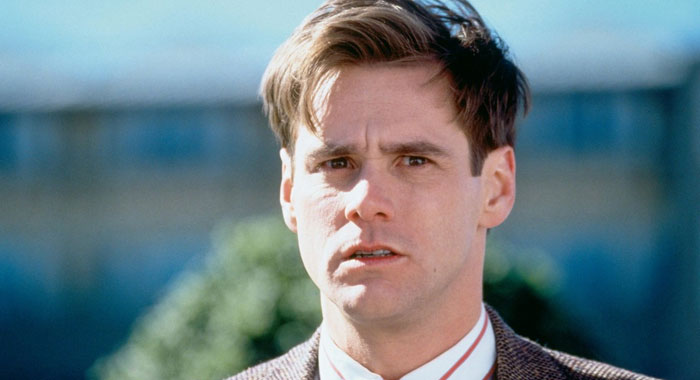
Is it science fiction? A comedy? A drama? A psychiatric syndrome? Actually, 1998’s The Truman Show is all of the above — which has a lot to do with why it’s not only the best-reviewed film of Jim Carrey’s career, but a high-water mark for 1990s cinema in general. Carrey stars as Truman Burbank, the unwitting star of a wildly popular reality series engineered by a producer named Christof (played by Ed Harris), in which Truman’s life — complete with fake wife, fake friends, and a whole fake town — is lapped up by eager audiences. It didn’t net Carrey the Academy Award that many were anticipating, but The Truman Show has endured over the last 10 years, and predicted the overwhelming popularity of reality television in the years to come. In the words of Hollywood Report Card’s Ross Anthony, “this is clearly one of the decade’s cleverest, most original pictures.”